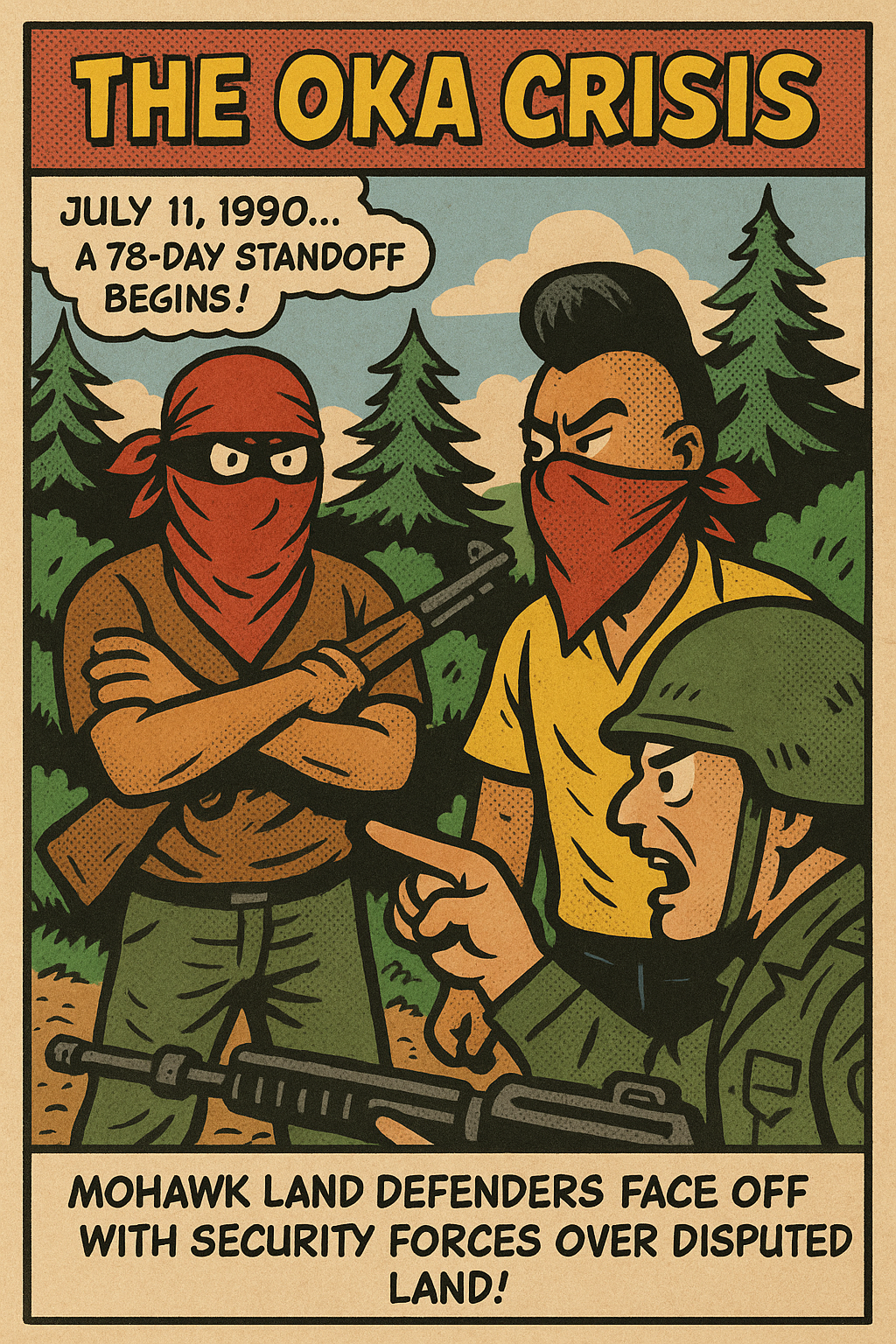
Today In Canadian History July 11: The Pines and the Barricades: The Oka Crisis Erupts
Share
On a hot summer morning, July 11, 1990, a dispute over a stand of pine trees escalated into one of the most significant moments in modern Canadian Indigenous history. On this day, the Sûreté du Québec, the provincial police force, advanced on a barricade erected by Mohawk land defenders from the community of Kanesatake, near the town of Oka, Quebec. The resulting confrontation, a hail of tear gas and gunfire, left one police officer, Corporal Marcel Lemay, dead. This was the start of the 78-day standoff known as the Oka Crisis.
The conflict was ignited by the proposed expansion of a private golf course and the development of luxury condominiums on land the Mohawk considered sacred and unceded. The area, known as The Pines, included a traditional burial ground. After exhausting all legal and political avenues to stop the development, the people of Kanesatake erected a barricade to physically block access to the site. In a show of solidarity, the neighbouring Mohawk community of Kahnawake blockaded the Mercier Bridge, a major commuter artery into Montreal, dramatically raising the stakes.
The standoff, which eventually involved the Canadian Armed Forces, was broadcast across the world. Images of Mohawk warriors, faces masked, standing defiantly against armed soldiers became iconic. The Oka Crisis was a watershed moment. It exposed the deep frustrations of Indigenous peoples over unresolved land claims and brought the issue of Indigenous rights to the forefront of the national consciousness in a way that could no longer be ignored. While the golf course expansion was ultimately cancelled, the crisis left a complex legacy of trauma, resentment, and a renewed determination for Indigenous self-determination.
